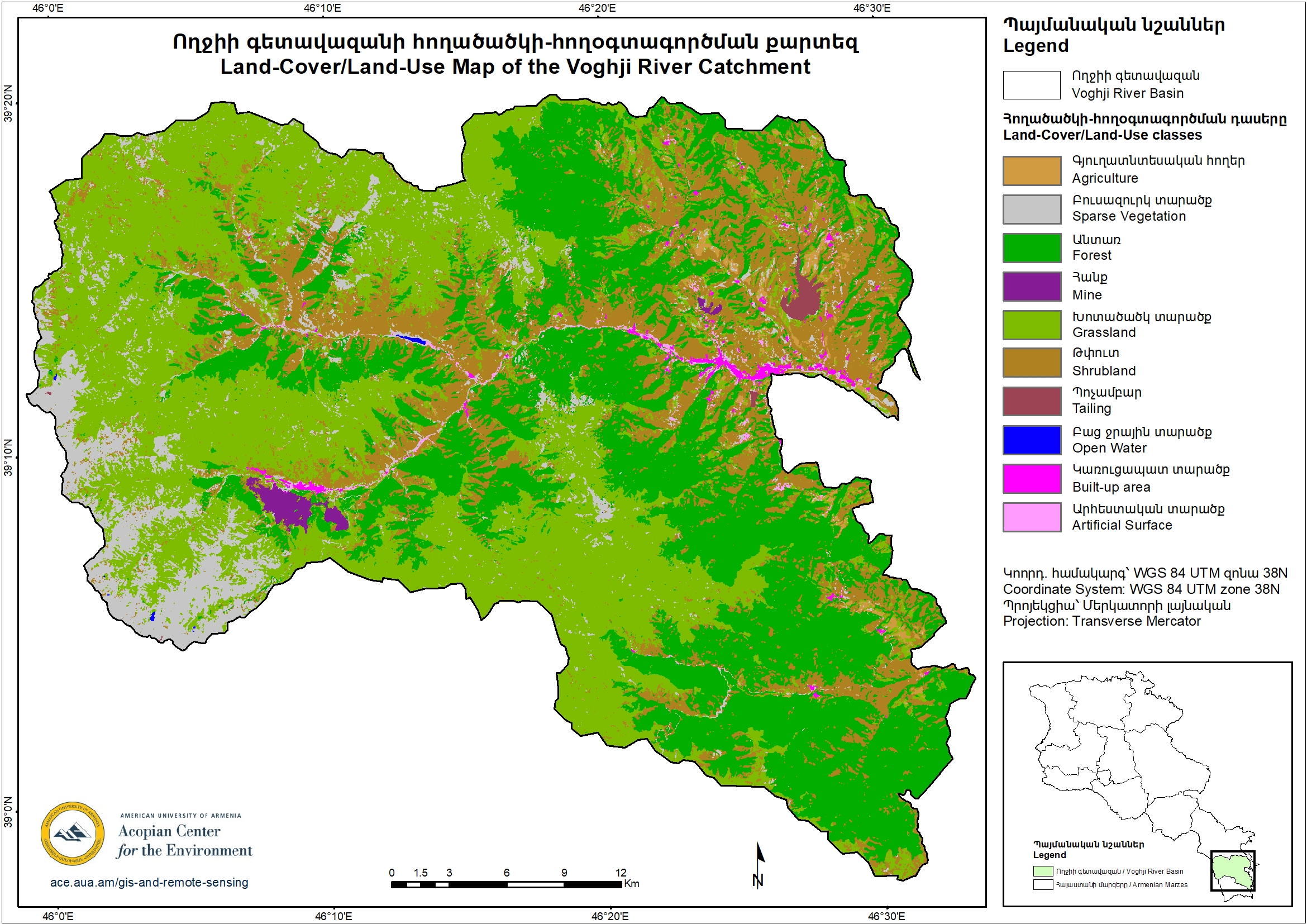Remote Sensing of Land-Cover/Land-Use in the Voghji River Basin, Syunik Region, Armenia

Detailed land-cover and land-use maps constitute an important basis for decision-making, as well as an important source of baseline information for environmental research. Changes in land-use/land-cover (LULC) in regions affected by mining activity are highly relevant for environmental degradation processes, such as deforestation, erosion, and landslide occurrence. In Armenia, mining areas are predominantly located in the southern part of the country (Syunik province). LULC changes in this region often take place at small spatial scales, typically in the order of magnitude of a few hectares. Currently, no global or regional-scale LULC product (e.g. Bleyhl et al., 2017; Bontemps et al., 2015; Ran and Li, 2015) fulfills the requirements in terms of spatial resolution and thematic accuracy.
To better address the needs for improved base maps and academic staff skilled in image processing and analysis, the AUA GIS and Remote Sensing Lab proposed to carry out a LULC mapping exercise for the Voghji River basin based on freely available data from the novel Sentinel-1 and Sentinel-2 missions operated jointly by the European Space Agency (ESA) and the European Commission. The data from these missions are made available at no cost as part of the European Copernicus programme.
The main goals of this study were (a) to provide necessary base information on land use and land cover for further studies in the area on hazards related to tailings and reservoirs in the study area; (b) to assess the usefulness of moderate-resolution Sentinels data for LULC mapping in the region in comparison to older products based on higher-resolution, but costly data; and (c) to build capacity at the AUA GIS and Remote Sensing Lab in optical and radar satellite data processing and image classification. In section 2, the study area, datasets, and algorithms are described that were used and developed for the study. Results are reported and discussed in section 3. Section 4 concludes this report and an outlook on potential further work is given.
